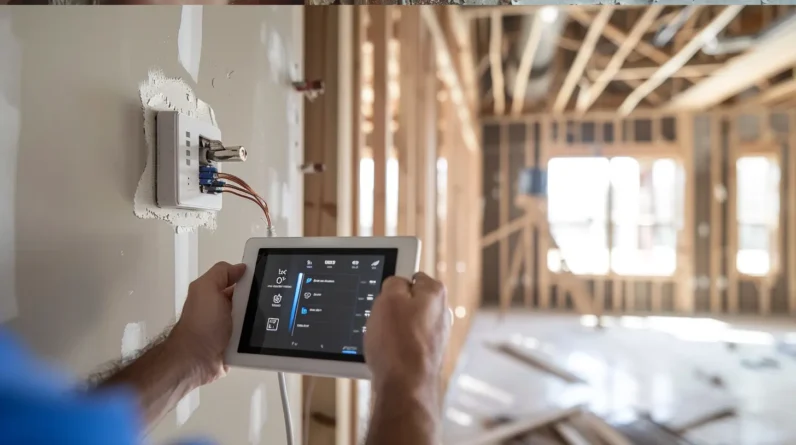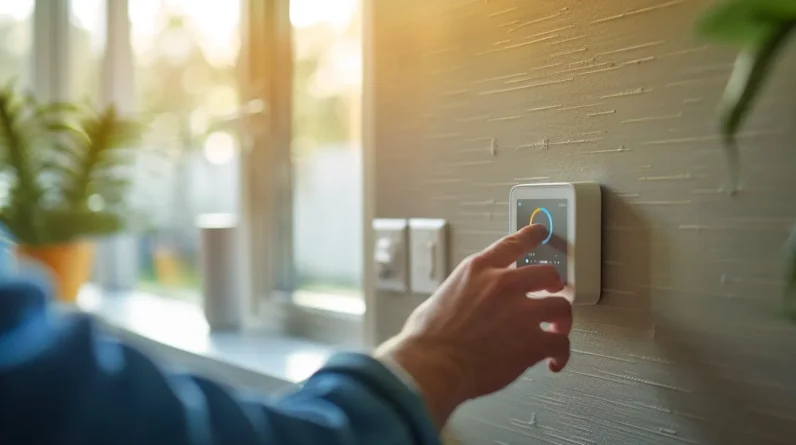
We’re witnessing a surge in smart device adoption, with 57% of U.S. households expected to have at least one by 2025. These devices streamline tasks, reduce energy consumption, and save time. We’re seeing significant cost savings and increased convenience. As we explore their efficiency, it’s clear they’re making a impact – and we’re about to discover just how much they can improve our daily lives.
Current State of Smart Home Adoption
The global smart home market is growing rapidly, and we’re seeing significant adoption rates worldwide. We’ve found that approximately 57% of U.S. households will have at least one smart home device by 2025. Smart TVs and voice-controlled devices are prevalent, with smart lighting systems leading globally. Household penetration rates are expected to reach 68.6% by 2027. We’re observing increased adoption driven by automation, user experience improvements, and mainstream acceptance. Key drivers include increasing connectivity, AI integration, and sustainable solutions, which will propel the market toward an estimated $135 billion valuation by 2025. Adoption is expanding rapidly.
Energy Efficiency and Cost Savings
As we explore energy efficiency and cost savings, it’s clear that smart devices play a crucial role in reducing our energy consumption. We’ve found that smart thermostats can cut heating and cooling costs by up to 20%. Smart lighting systems can reduce electricity use by as much as 75%. Additionally, energy-efficient smart appliances optimize energy use by running during off-peak hours. We’ve also seen that over half of smart home users report lower energy bills. By adopting these devices, we can lower our energy bills and reduce greenhouse gas emissions. This leads to substantial annual cost reductions and a return on investment.
Time-Saving Convenience and Automation
We’re exploring how smart devices make our lives easier, and it’s clear that time-saving convenience and automation are significant benefits. Smart thermostats and lighting systems automate temperature and lighting control, reducing energy waste. Automation of household tasks, such as grocery shopping and dishwashing, is also expected to increase. We can remotely monitor and control devices, receiving real-time energy updates and customizing schedules. This automation saves time and increases flexibility, allowing us to focus on other tasks. By automating repetitive tasks, we can free up time and improve our overall quality of life with smart devices.
Security and Privacy Considerations
Given our increased reliance on smart devices, it’s essential that we consider their security and privacy implications. We’re seeing a surge in device vulnerabilities, with over 50% of IoT devices containing critical security vulnerabilities. Weak security design, outdated software, and poor coding practices contribute to these vulnerabilities. We’re also observing a rise in attacks on IoT devices, including smart cameras and medical equipment, which can lead to significant surveillance and privacy breaches. It’s vital that we address these security risks to prevent operational disruptions and financial losses, which can average $330,000 per incident.
Technological Advancements Enhancing Efficiency
Security and privacy concerns associated with smart devices underscore the need for technological advancements that enhance their efficiency. We’re seeing improvements with faster, more energy-efficient chips like ESP32 and Nordic nRF54, which boost computing power while reducing costs. On-device AI processing enables real-time data analysis, minimizing cloud dependency and latency. Advances in lower power consumption and open-source processor architectures also contribute to enhanced efficiency. These advancements are essential for widespread adoption and effective use of smart devices, allowing us to streamline tasks and reduce manual inputs. They drive smarter device capabilities, improving overall efficiency.
User Behavior and Experience Outcomes
As smart devices become increasingly integral to our daily lives, it’s clear that our behavior and experience with these devices have a significant impact on their overall efficiency. We spend around 4 to 4.5 hours daily on smartphones, with frequent interactions and high app usage. However, this can lead to fragmented attention, reducing productivity. Many of us feel addicted to our devices, and notifications can decrease efficiency. Despite this, smart home devices and automation can save time on repetitive tasks. We integrate these devices mainly via mobile apps and voice assistants, improving energy efficiency and comfort, but often don’t optimize them for maximal time savings.
Conclusion
We’ve found that smart devices can save us time, with 62% of users reporting a reduction in household chores. This convenience comes with benefits, including increased productivity and energy efficiency. As technology advances, we expect to see even more innovative solutions, further enhancing our daily lives and streamlining tasks, making our lives more efficient overall.







